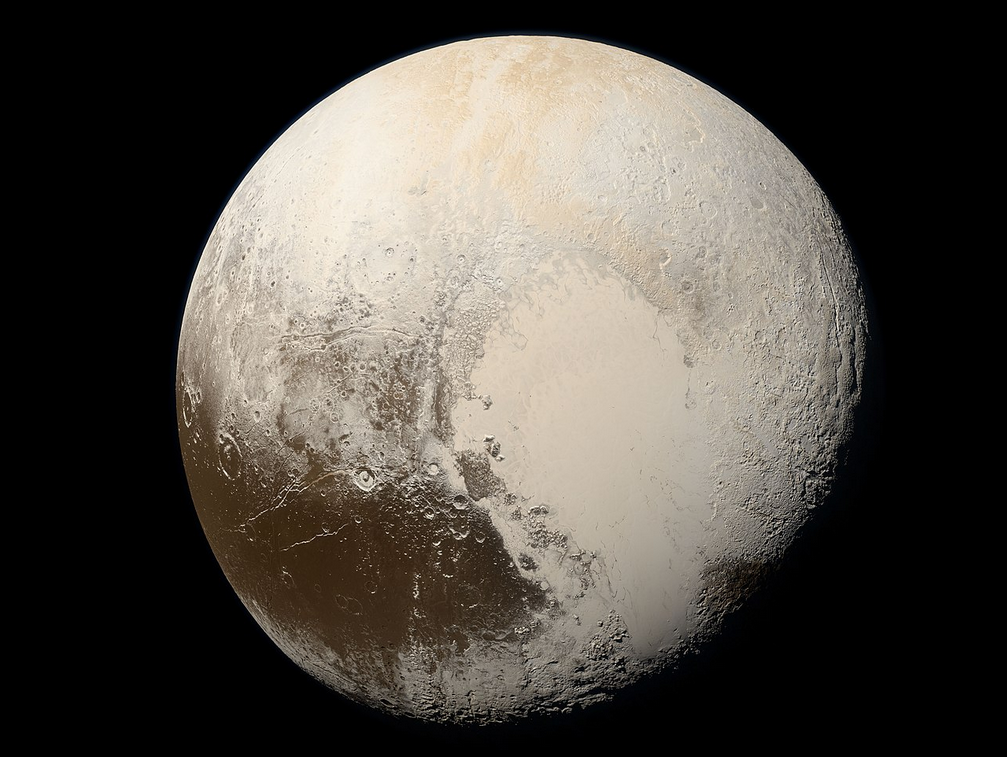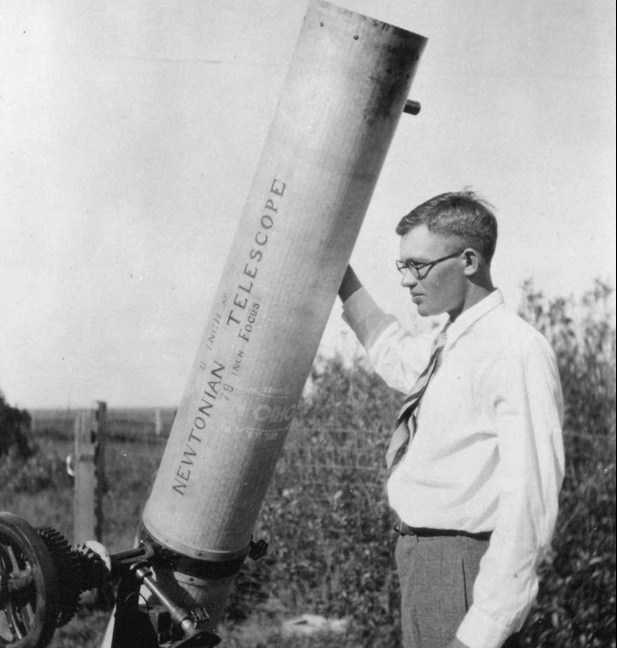
It only takes a glimpse into the night sky to realize our closest neighbor is the Moon, our own natural satellite. Traveling a distance of roughly 240,000 miles (386,400 kilometers) it takes around 3 days to make a one way journey to the Moon. The planets of our solar system are much further away some more so than others so dwarf planets like Pluto take a long time to reach.
What Is Pluto?
Pluto is a minor-planet located in the Kuiper belt which is located past Neptune. It is the ninth-largest object which directly orbits our star, the Sun. As part of the Kuiper belt it is made primarily of ice and rock and is vastly smaller than our solar system’s inner planets.
It is in fact smaller than Earth’s Moon with a mass 6 times smaller and a volume that is roughly one-third of the Moon’s. Discovered in 1930 it was initially termed the ninth planet of our solar system. This has however since changed.
Why Is Pluto Not a Planet Anymore?
For many years following its discovery there was contention with regards to it being an actual planet. In 2006 the International Astronomical Union IAU set out three basic rules to define a planet these rules are:
- The object must orbit the sun
- It must be large enough to be rounded by its own gravity
- It must have cleared the neighborhood around its orbit
This was a case of two out of three not being good enough and Pluto failed based on the last rule. Clearing the neighborhood requires that the object is gravitationally dominant around its own orbit. This is not the case with Pluto. It therefore is classified as a dwarf planet.
How Far Is Pluto from Earth?
As with all planets in our solar system the distance between them varies depending on their positions in their respective orbits around the Sun. When Earth and Pluto are on opposite sides of the sun they are 4.67 billion miles apart. At their closest point however they are 2.66 billion miles apart.
How Far Is Pluto from the Sun?
The distance between the Sun and Earth is equivalent to a unit of measure known as astronomical units (AU) and Pluto sits 39 AU away from our solar system’s only star. This means on average it is 3.7 billion miles (5.9 billion kilometers) away from the Sun.
How Long Does It Take Pluto to Go Around the Sun?
When we talk about any planet’s orbit around the Sun, especially with regards to how long it takes to complete its circuitous journey, we refer to its orbital period. Pluto is one of the more distant planetary bodies from the Sun in our solar system so its orbital period is quite long.

It takes Pluto 90,530 Earth days or roughly 248 Earth years for Pluto to complete a full orbit around the Sun. To put this in perspective when Pluto was last in the same position in its orbit as it is in 2023 certain historical events were taking place. These included:
- The start of the American Revolutionary War
- Pope Pius VI became the 250th Pope
- André-Marie Ampère, French physicist and mathematician died
Pluto’s Structure
The basic internal structure of Pluto includes a silicate based core surrounded by a liquid water ocean and a final water ice crust. Pluto’s plains region on the surface is likely composed of at least 98% nitrogen ice with trace amounts of both methane and carbon monoxide.
Pluto’s mountains are thought to be composed of water ice. These various types of surface ice create a look to Pluto’s surface of diverse colorations. This creates a lot of contrast on the surface making it one of the most visually spectacular bodies in our solar system.
The color of Pluto varies from charcoal black, to dark orange and white. In appearance it is similar although less orange to Jupiter’s moon Io but significantly less red than Mars. Notable geographic features on the surface of Pluto include:
- Tombaugh Regio (the Heart)
- Cthulhu Macula (the Whale)
- Brass Knuckles
Surface
A lack of significant craters on the surface of Pluto indicate that its current surface may be between 140,000 – 270,000 years old. It is characterized by mountains, valleys, plains and craters which experience surface temperatures of -375 to -400 degrees Fahrenheit (-226 to -240 degrees Celsius).
The huge mountains of Pluto, some reaching 9800 feet in height are made of water ice with a frosting of frozen methane. When it comes to the plains regions they appear to be made of frozen nitrogen gas.
Atmosphere
There is, according to experts, a thin but somewhat tenuous atmosphere on Pluto which grows as it gets closer to the Sun and shrinks back as it moves away.
Magnetosphere
Scientists currently think it is unlikely that Pluto has a magnetic field. This is because of its small size and slow rotation, both of which indicate little to no magnetic activity on Pluto.
Does Pluto Have Moons?
According to NASA Pluto has five known moons: Charon, Nix, Hydra, Kerbos and Styx. Prevailing theories suggest these moons may have formed as a result of Pluto colliding with another body in space that may have been similar in size to itself.
Its largest moon Charon is roughly half Pluto’s size making it the largest moon in comparison to the planet it orbits. Charon’s orbit is such that it matches the rotation of Pluto meaning that it is always visible from the same portion of the planet. It does not rise or fall in the sky and the other side of the planet does not get to see Charon at all.
History of the Observation of Pluto
Unlike most of the other planets in our solar system Pluto was not visible to the astronomers of the ancient world . It would take considerable strides in the world of telescope technology in fact for us to even suspect another planet’s existence beyond the known planet Neptune.
It was in the 1840s that Urbain Le Verrier would use Newtonian mechanics to predict the presence of Neptune. This was based on the effects the planet exerted on Uranus’s orbit. Once Neptune was discovered however it was then deemed that it might not just be Neptune that was affecting Uranus, this led to the presence of a second planet being theorized.

The search for this illusive ninth planet captured the imagination of professional and amateur astronomers alike for decades. Some of them even captured Pluto on images with their telescopes but were sadly not aware of what they had found until much later.
A project to find the elusive “Planet X” as it was known started in 1906. It was wealthy Bostonian Percival Lowell, founder of Lowell Observatory in Flagstaff, Arizona that would spend his final years searching for this ninth planet. Lowell would capture Pluto in two faint images in 1915 but he did not know what he was seeing.
Lowell died in 1916 and the project stalled until his widow petitioned the observatory to resume the search, which it did in 1929. Clyde Tombaugh was tasked with the painstaking project but after a year he would finally locate Pluto and its official existence was reported to Harvard College Observatory on March 13th 1930.
Space Exploration
Pluto has only recently been approached using terrestrial spacecraft in the form of the 2015 New Horizons mission. Originally launched in 2006 it made its closest pass on July 14th 2015. A great deal was learned from the mission and some amazing images were beamed back to Earth.
To date this is the only mission to Pluto although scientists continue to advocate for new missions with further scientific intentions. There is a hope to one day map the entire surface of Pluto and make further investigations of the planet’s moons.
How Long Does It Take to Get to Pluto?
As mentioned there has only so far been one mission that passed by Pluto and this was the New Horizons spacecraft. It took 9 years and 5 months to complete its journey traveling at the highest speeds possible.
If we were to try and enter orbit for more in depth research it would take considerably longer because speeds would need to be decreased to ensure capture into orbit around this dwarf planet.
Final Thoughts
Pluto was once considered a planet but was downgraded a few years ago to dwarf planet status. We know a fair amount about it thanks to deep space observation and a flyby mission in 2015. At that time it took the better part of a decade to make the journey but a more in depth study may require slower speeds and take a lot longer.
